Pricing strategies are essential to business success. Choosing the right one will ensure you attract customers while getting the best return for your product or service. One pricing method, dynamic pricing, has recently gained exposure among business owners. This strategy uses market data and artificial intelligence to inform decision-making and earn the best profit possible.
This article will explore dynamic pricing in detail and help you decide whether it’s a good fit for your business. We’ll walk you through the pros and cons of this pricing strategy and teach you how you can implement it today.
Understanding Dynamic Pricing
In simple terms, a dynamic pricing strategy means having flexible prices that rise or fall according to consumer demand.
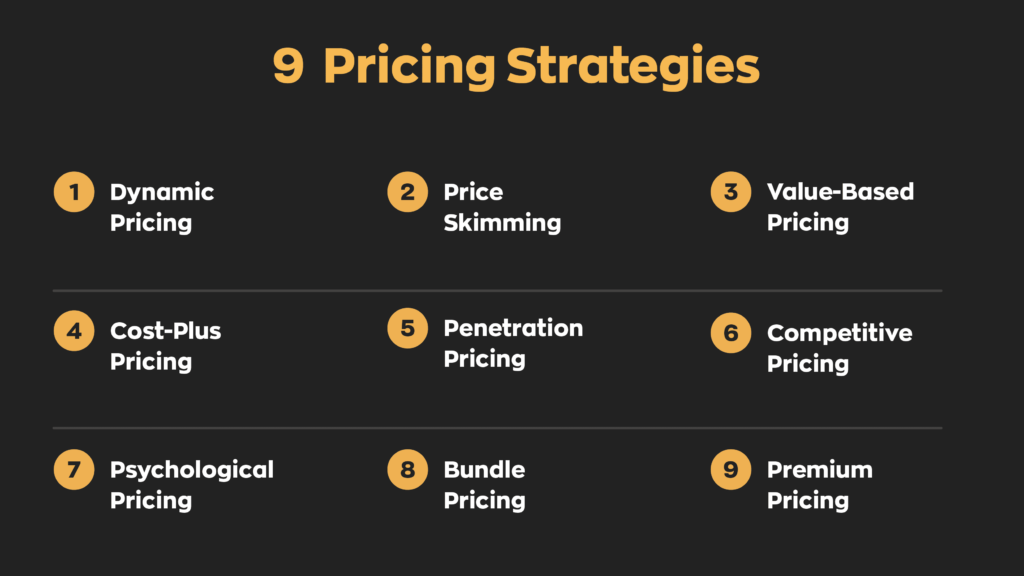
The dynamic pricing strategy aims to maximize profits by always selling a product or service at the highest price a customer will likely pay. It differs from static pricing because it constantly adjusts using real-time data and external market factors. Two important kinds of dynamic pricing will interest small businesses in particular.
Peak dynamic pricing
This pricing method is helpful for industries with peak seasons or times, such as travel, tourism, and accommodation. Using popular ‘peak’ seasons as a guide, you can adjust your prices to maximize revenue during popular months when people spend more money. Uber has famously used this pricing strategy, charging customers a premium for rides booked during times of high app usage.
While travel and tourism are great examples of this model, it could also be applied to many industries—basically, anything that might see an influx in interest at a particular time of year.
Segmented dynamic pricing
On the other hand, segmented dynamic pricing is when you calculate different prices based on a specific group of customers. You can divide customers by age, location, or other factors. An example of this would be to offer special pricing for senior citizens.
One of the major misconceptions about dynamic pricing is that it always results in higher prices. Not true. If the value or demand of a product decreases, dynamic pricing can help ensure you still make the most out of a sale, even if that is less than expected.
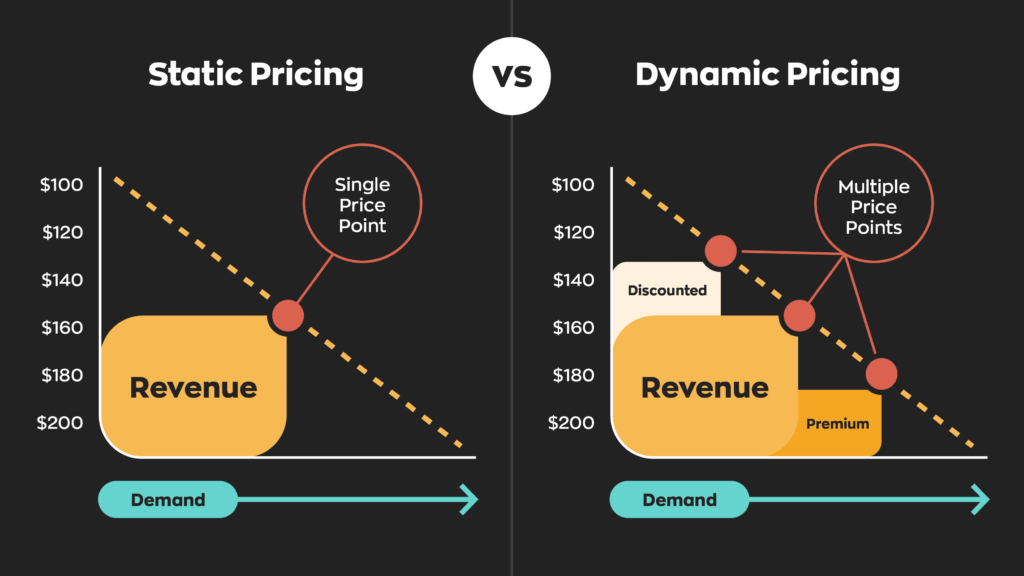
For example, if you’re a food business, dynamic pricing can help you sell produce before it expires. In clothing, reducing prices before the end of a season can help you shift stock and leave room for new trends.
The benefits of dynamic pricing
Dynamic pricing is an ideal strategy that virtually every industry can use in some way. Firstly, it can increase your revenue across the board since it tailors prices according to customer expectations and market trends. As demand rises, so too does the value of the product.
This pricing strategy can also help small businesses gain a larger market share by analyzing and adjusting their prices with competitors 24/7 and actively considering external market factors, like supply chains, and how they may impact product availability.
Over the last several years, there have been many examples of household names using dynamic pricing to great success. We’ve already mentioned Uber, but another well-known company is Airbnb. It has its own built-in ‘smart pricing’ feature, which automatically changes nightly prices at accommodation based on customer demand, seasonal times of the year, and if any special events are happening in the immediate area, such as concerts or festivals.
Amazon, one of the world’s largest online marketplaces, reportedly changes product prices over 2.5 million times daily across its website. This is done to reflect changes in the market and competitor prices and help increase its profit margins on items customers show greater interest in buying.
The drawbacks of dynamic pricing
Although dynamic pricing has many benefits, it’s not foolproof, and some drawbacks might impact its suitability for some businesses.
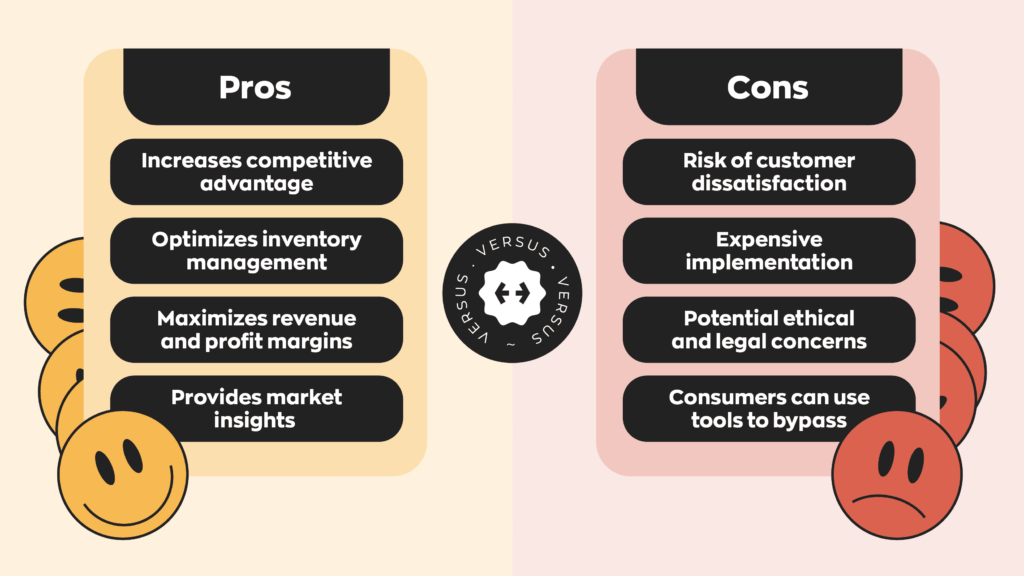
As more consumers become aware of the practice, businesses may receive public backlash and a drop in loyalty over rising prices. For example, Wendy’s was recently under fire when their CEO announced plans to test dynamic pricing in 2025.
Critics also claim dynamic pricing creates a class system among consumers. When tickets for Taylor Swift’s Eras Tour went on sale, a surge in demand meant that resale sites offered tickets for up to $22,000—well beyond the price range of many fans. This debacle caused worldwide headlines, with calls to legislate dynamic pricing.
Another growing problem with the dynamic pricing strategy is that more customers are finding ways to avoid it, including using a virtual private network (VPN) or proxy service.
Proxies and VPNs allow people to disguise their IP address, making it seem like they live elsewhere. This can prevent businesses from adjusting their prices, as customers can “relocate” to countries that might typically receive cheaper prices.
VPNs also work as a cybersecurity tool, encrypting the internet connection itself, offering the maximum level of privacy. With a VPN, websites and internet providers cannot monitor any online activity. As such, it can be difficult for you to collect data that can be used to inform dynamic pricing.
Is this pricing strategy legal?
A question often asked by small businesses interested in this trendy pricing method is whether or not it is legal. The short answer is that dynamic pricing is acceptable in many jurisdictions—with some exceptions.
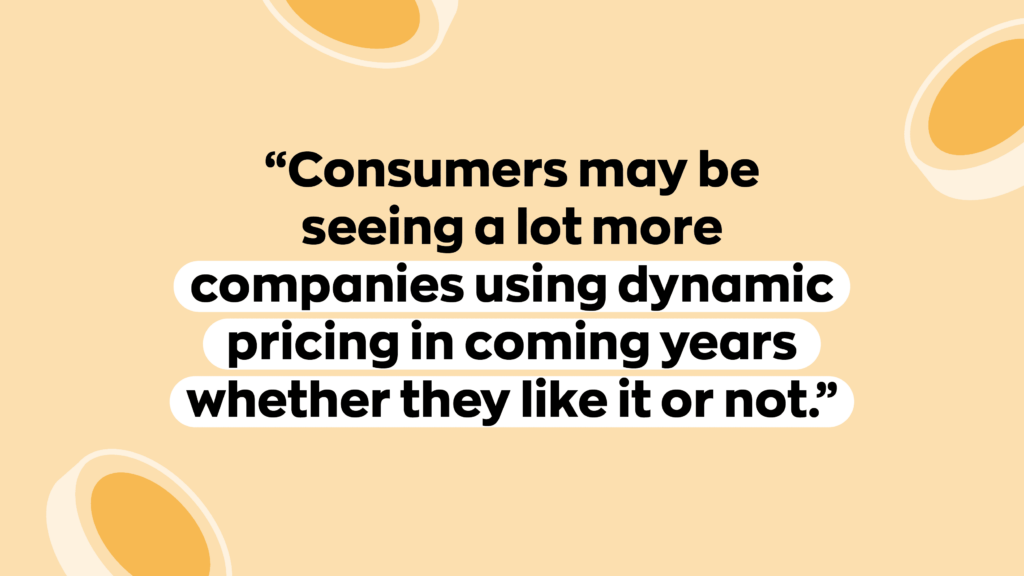
In the US, for example, companies can adjust prices, provided they don’t use information like gender, race, or religion. In Europe, companies are free to determine the prices they charge as long as “they inform consumers about the total price” and there is no deception during the booking and payment process.
Tips and considerations for implementation
If you want to implement a dynamic pricing strategy, you need to prepare accordingly. The first and most crucial challenge is setting your goals. Ask yourself what you want to achieve and what timeframe to measure results in. This might depend on your industry, but many businesses want to increase revenue or find a new way to shift stock, or example.
Next, businesses must invest time and effort into researching their customer base. This will help them find out what their customers want and the maximum amount they’re willing to spend on it.
Naturally, this will require a lot of data, which isn’t always easy to access. Thankfully, we made it easy for inFlow users to conveniently pull reports for their sales, purchases, and inventory. You’ll be able to gather all the information you need to implement dynamic pricing in no time!
Dynamic pricing has been proven to be highly effective in helping businesses succeed. The rise in AI technologies means you can gather many insights and adjust prices automatically, helping you focus your time on other parts of your business.
With the proper care and planning, virtually every business can implement dynamic pricing to improve revenue, save time and effort, and become more cost-effective.





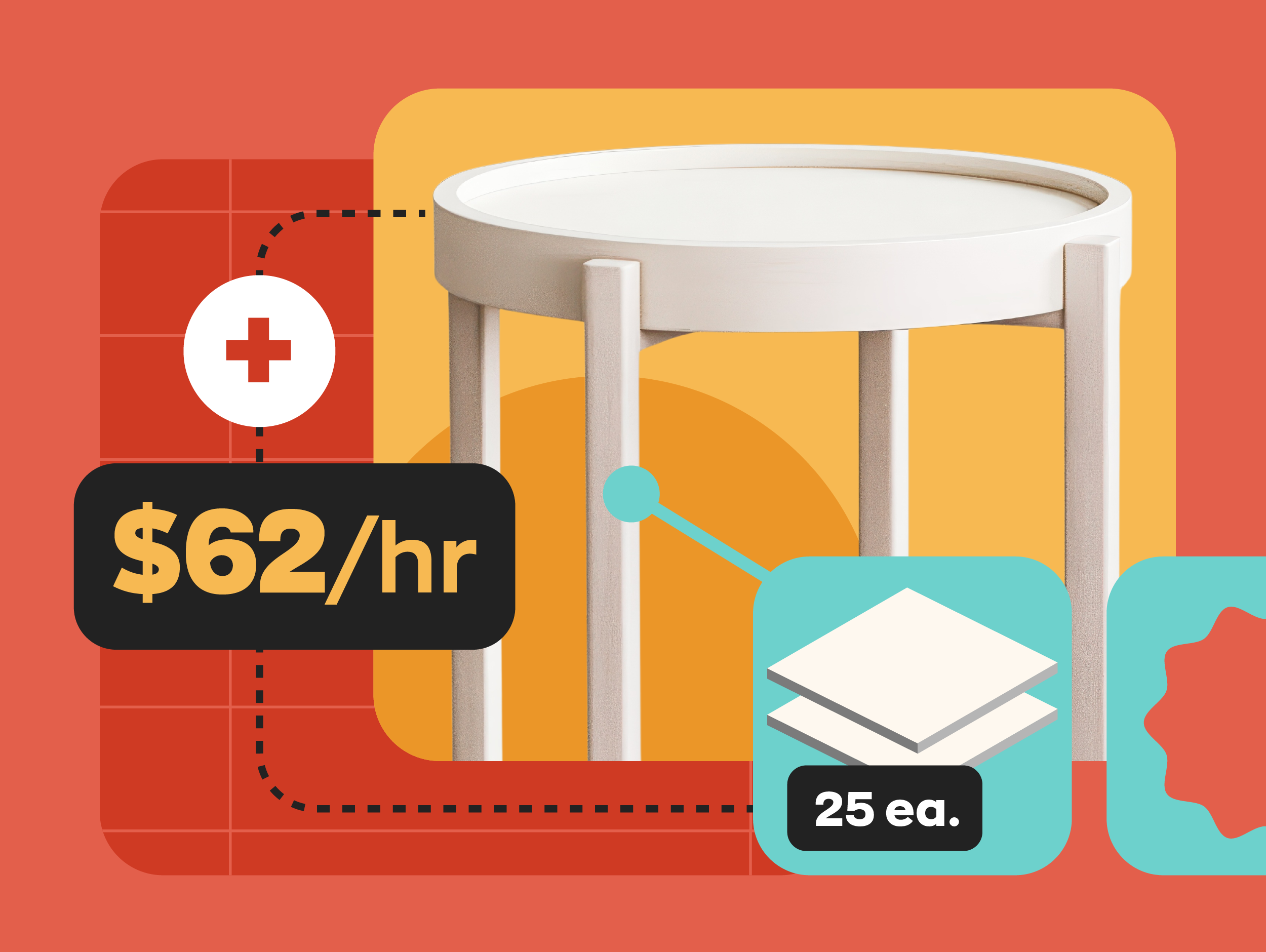
0 Comments